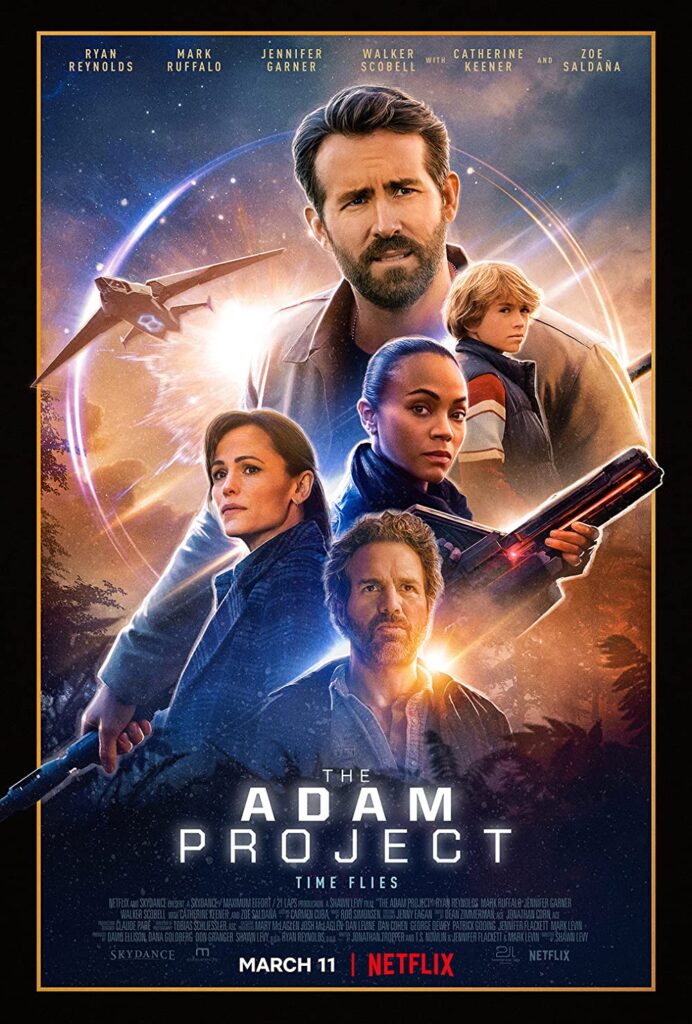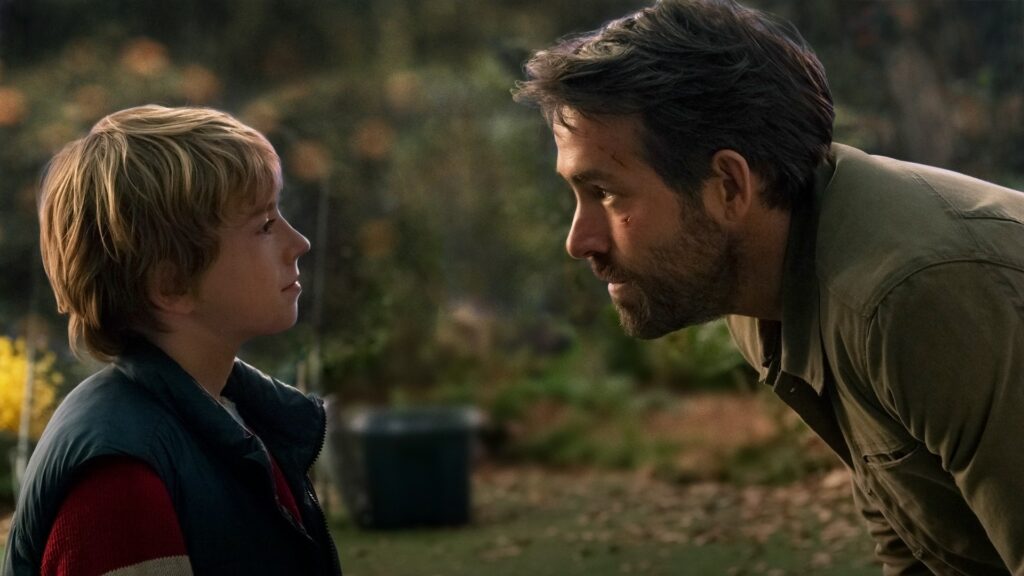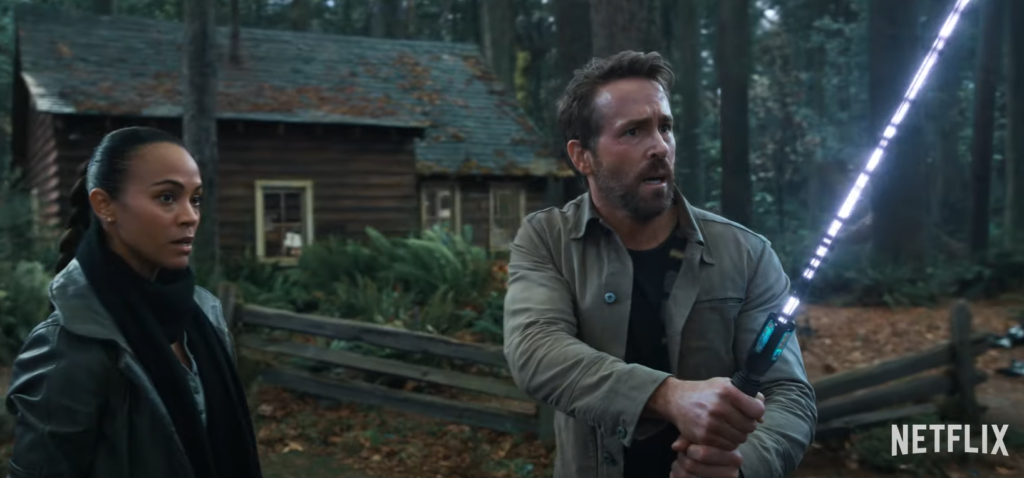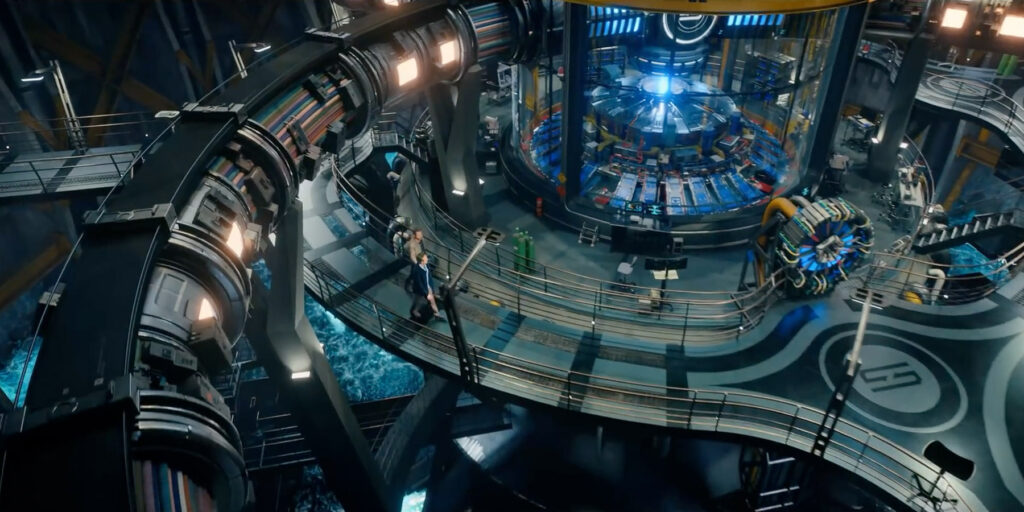
The Adam Project, Netflix boasts, has been consistently in the service’s Top Ten since its release. You can understand why. People like to watch Ryan Reynolds. Even I quite like to watch Ryan Reynolds. He’s discovered that secret of success that Arnold Schwarzenegger, Humphrey Bogart and Julia Roberts all found out before him: be the same in every film. So here, as usual, he’s charming, cheeky, quippy, a bit rude, and slightly vulnerable – but only slightly. Mostly quippy. You have to ask why they don’t just call his character in every movie ‘Ryan’.

Reynolds here plays the titular Adam, a time-travelling space pilot from 2050 who returns to 2022 to enlist the help of himself as a boy to thwart the invention of time travel, thereby saving humanity from a Skynet-style destiny of dreadful devastation. Along the way he deals with some of his own childhood trauma (while surely causing a whole mess of future problems by exposing his boy-self to dozens of brutal murders, no…?)
Quippy is definitely what Reynolds is going for here. You’re never waiting long for a quip, and some of them are not bad. But quippiness always brings a downside, of course. The film regularly undermines its emotional moments because it just can’t resist a quip. (Though to be fair, I know plenty of real life people who are exactly the same.)

There is an emotional arc for several of the characters, but all of them feel speedy and unearned. Reynolds needs to learn that his father loved him despite his absence, but the lesson is dictated to him in a talky scene and not played out through characters’ actions on screen. Sorian the baddie turns out to be bitter and angry because she feels unappreciated, but again this is something we’re told in a dialogue scene when it would have vastly more impact and pathos if we saw it for ourselves. For an action movie, there’s very little ‘show me don’t tell me’ here.
And if there’s one good lesson to be learned from the endless quipping, it’s that quips are not enough to paper over plot holes. There are huge logical lurches and leaps in the film, and I’m not just talking about the paradoxes that emerge when you ask the audience to take time travel seriously. There are faceless baddies with invisibility suits that politely become visible before queueing up to attack Reynolds one by one. There is Reynolds’ hyper-competent time-travelling wife Zoe Saldaña, who has waited patiently for him for four years, hiding out in a shack, when she could have spent those four years PREVENTING THE INVENTION OF TIME TRAVEL, seeing as that was the reason she came back to the past in the first place. There is the massive, super-advanced, technological mega-donut that generates the electrical field that allows time travel to occur, which is housed in a building with no engineers, no guards, no receptionist, no staff of any kind. The place looks clean but who can tell why, because there’s definitely no cleaner.

And magnets. Magnets! Don’t get me started on the magnets. The climax of the film relies on magnets, and even a seven year old can tell you that real magnets do not behave the way they do in this film. Magnets! What is this, an Insane Clown Posse video? How can I be angry watching a film about magnets?! They’re just MAGNETS!
I like quips. Goodness knows I’ve written some myself. But if you’re going to put a lot of effort into writing quips for your movie, please also put some of that effort into those other cornerstones of storytelling: character motivation, world building, and tone. And ask someone how magnets work.
